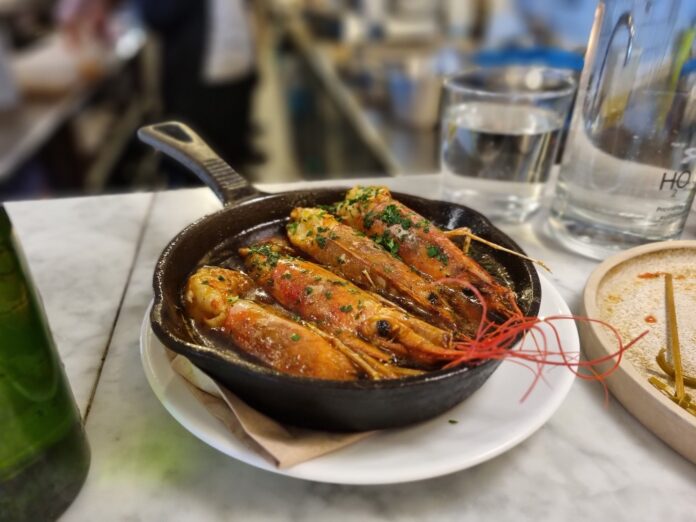Peruvian food has had a huge decade, rising the ranks of popularity of the World’s Best lists and cropping up with Michelin star winning restaurants everywhere from London to LA.
Any gourmand worth his pink Himalayan salt is now well versed in ceviche, tiger’s milk, quinoa and causa, and Peru boasts a rich gastronomic heritage that has captivated food enthusiasts worldwide.
Without wishing to state the obvious here, the best place to try Peruvian food is, of course, in Peru, where this vibrant cuisine, hand in hand with its native ingredients, shines brightest.
Peruvian cuisine reflects the country’s rich history and multicultural heritage. It’s a mixed stew (more on Peruvian stew – or seco de carne – later, actually) of Italian, Japanese, Spanish, Chinese and other immigrants piled on top of the country’s indigenous people and cultures. As chef Gastón Acurio, who is known for putting Peruvian food on the world map, told Time Out; “the great advantage of Peruvian cuisine is that it’s universal, multicultural. In every Peruvian dish there’s a little Japanese, a little Chinese, a little Spanish, Arab, French, Italian, Andean and Amazonian”.
We couldn’t agree more. Perhaps it’s this familiarity in the unfamiliar that makes Peruvian cuisine so stand out. That, or the wealth of produce, which reaches from its mountains to its coast.
Peru is a land that is well known for it’s rich biodiversity. Within the country there are different sub-regions and microclimates spread across its snowy highlands, dense jungle and varied coastline. The coast itself stretches from Ecuador to Chile and varies from barren imposing desserts to craggy cliffs. To give you an idea of the wealth of produce this varied landscape produces, the country boasts 55 different types of corn, 300 varieties of chilli and over 3’800 varieties of potato. But who’s counting, hey?
Whether you’re a culinary enthusiast or an adventurous eater, trying these traditional Peruvian foods should definitely be on your bucket list. So, without further ado, here are 12 traditional Peruvian foods that you must try…
Ceviche
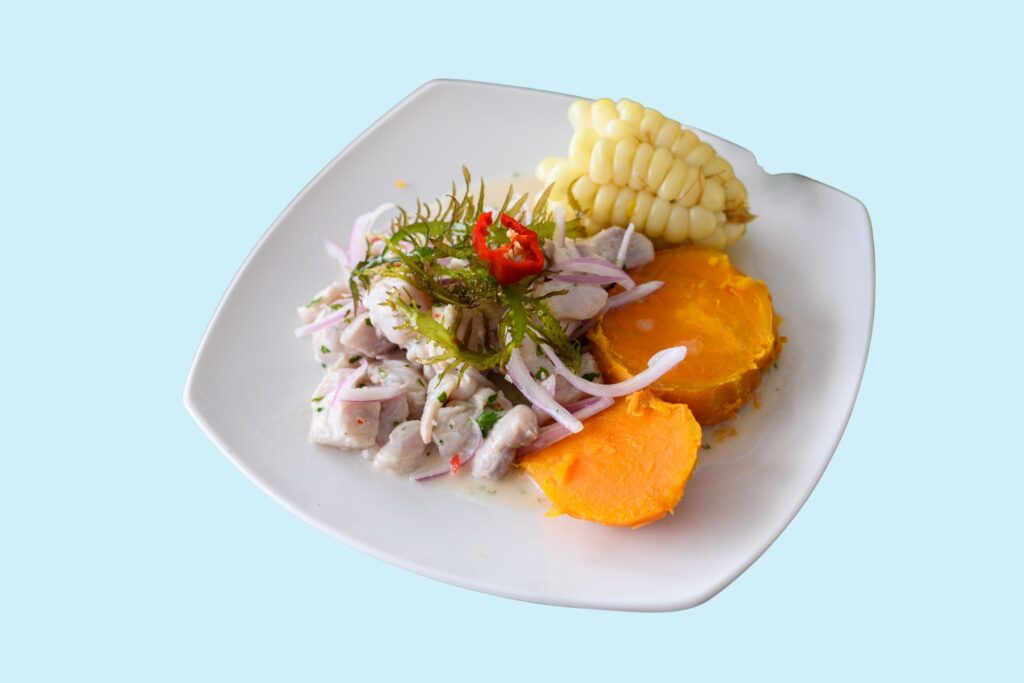
We had to start here, as ceviche is considered one of the most iconic dishes of Peru. This refreshing dish represents the vibrant flavors of Peru’s coast and is a must-try when visiting the country.
It’s a dish that has a lightness of touch, zest and energy that has won the world over. At its most basic, a white diced and cubed fish such as sea bass is marinated in a tangy mixture of citrus juice and chilli. The acidity of the citrus juice ‘cooks’ the fish, resulting in a firm yet delicate texture.
The origins of ceviche date back millennia and scholars believe that the Moche in Peru, a pre-Inca civilisation, were the first people to eat raw fish cured in acid. Research also suggests that later, the Incan Empire ate fish ‘cooked’ in the juice of tumbo (banana passionfruit) mixed with salt and chili peppers. Later, the Spanish brought citrus with them and so the dish evolved.
You’ll find various variations of ceviche throughout Peru, each with its own regional twist. Along the coast, ceviche is often made with white fish or shellfish. Move over to the Andes, and you’ll find fresh water fish like trout being used. In the highlands, ceviche will be served on with corn and potatoes while in the Amazon, you’ll find ingriedents like yucca and plantain in ceviche. It’s a rich and veritable feast we just love to indulge in.
Regional must-tries include ceviche de camarones (shrimp ceviche), which hails from Arequipa in Southern Peru, and black shell ceviche, star dish of Tumbes in the Northwest of Peru. Here, it’s made from a mollusc that reproduces in the mangroves there.
Oh, and don’t miss the famous ‘tiger’s milk’. This bright and spicy citrus-based marinade is used to cure the fish in classic Peruvian ceviche, and it’s one of the most common preparations you’ll see on menus here in the UK.
Lomo Saltado
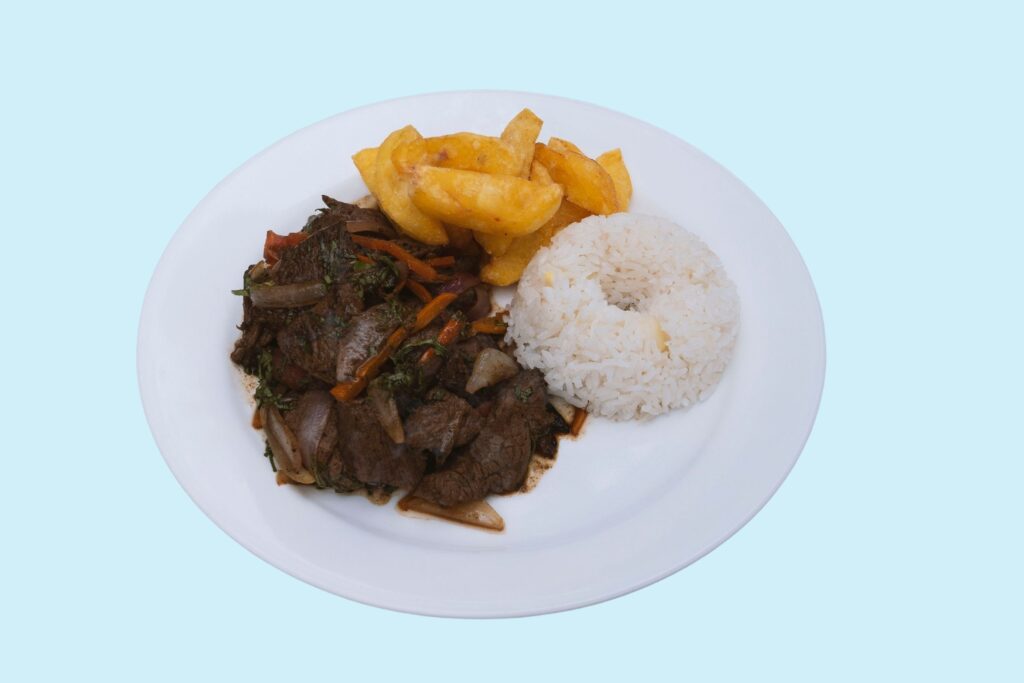
Lomo Saltado is a delicious example of Peru’s fusion cuisine, blending traditional Peruvian ingredients with Chinese influences. It’s a classic example of Peruvian Chifa cuisine that showcases Peru’s historical Chinese immigrant influence, and its flavours will undoubtedly transport you to a unique culinary crossroad.
This stir-fry brings together succulent strips of beef, onions, tomatoes, and spices, sautéed in soy sauce and vinegar. A good lomo saltado will be cooked in a smoky wok so the beef sears on a high heat – and should take no more than two minutes to make.
Lomo Saltado is typically served over a bed of white rice and accompanied by French fries. Some versions toss the fries in the wok with the rest of the mix, which is our preferred preparation in all honesty! If you don’t see a hot wok in the kitchen, don’t order it as it won’t have that seared ‘wok hei’ flavour that defines this most satisfying of dishes.
Sanguache
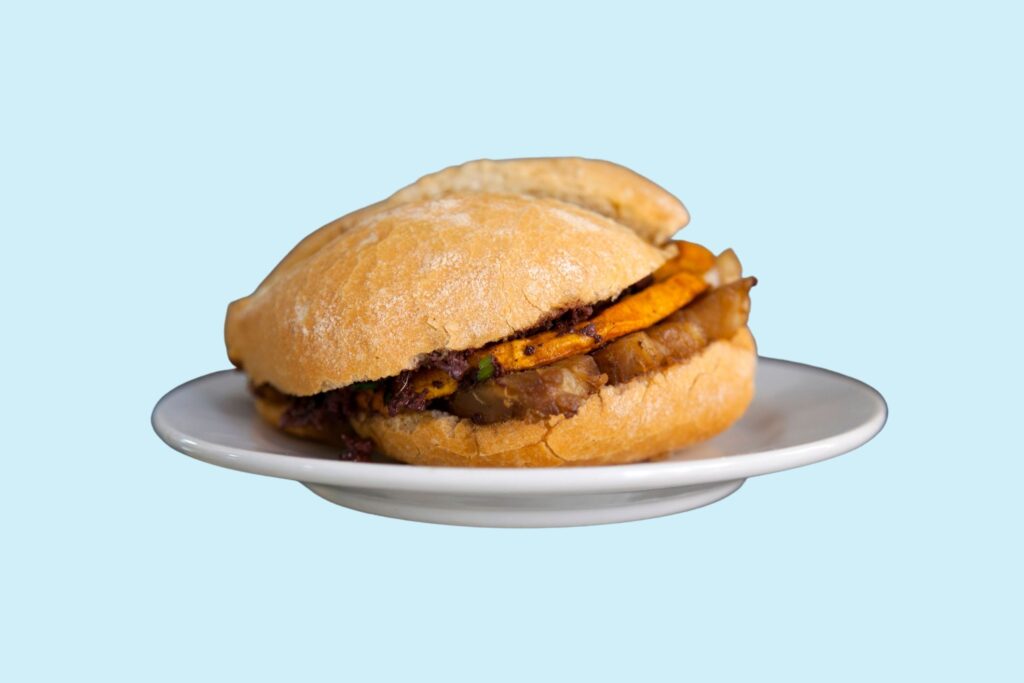
Sánguches (sandwiches) are an important part of Peruvian culture and are usually associated with breakfast, not lunch. However, in many cities sangucherías sell their sarnies well into the night, meaning that you can enjoy one any time of day. Result!
The country has a vast offering sandwiches, but perhaps its most beloved is the sanguche de chicharron. Here, thick slices of slowly braised and tender pork belly are fried in their own juices and fat, resulting in a sandwich whose meat manages to be both crunchy and juicy at the same time.
The pork slices are then stacked into a French roll and accompanied with slices of sweet potato and topped with salsa criolla – a relish typically made of onion and ají chilli peppers that are steeped in a marinade of lime juice, coriander and lime juice. The result is a sandwich that sings with the flavours of Peru.
The butifarra is another must try. It’s a cold sandwich filled with slices of Jamon del Pais, lettuce and a dollop of salsa criolla. It’s a deceptively simple sandwich filling, but the garlic-infused peppery ham alongside the piquant salsa is a match made in porky heaven.
Read: 10 of the best sandwiches in the world and the IDEAL places to eat them
Anticuchos
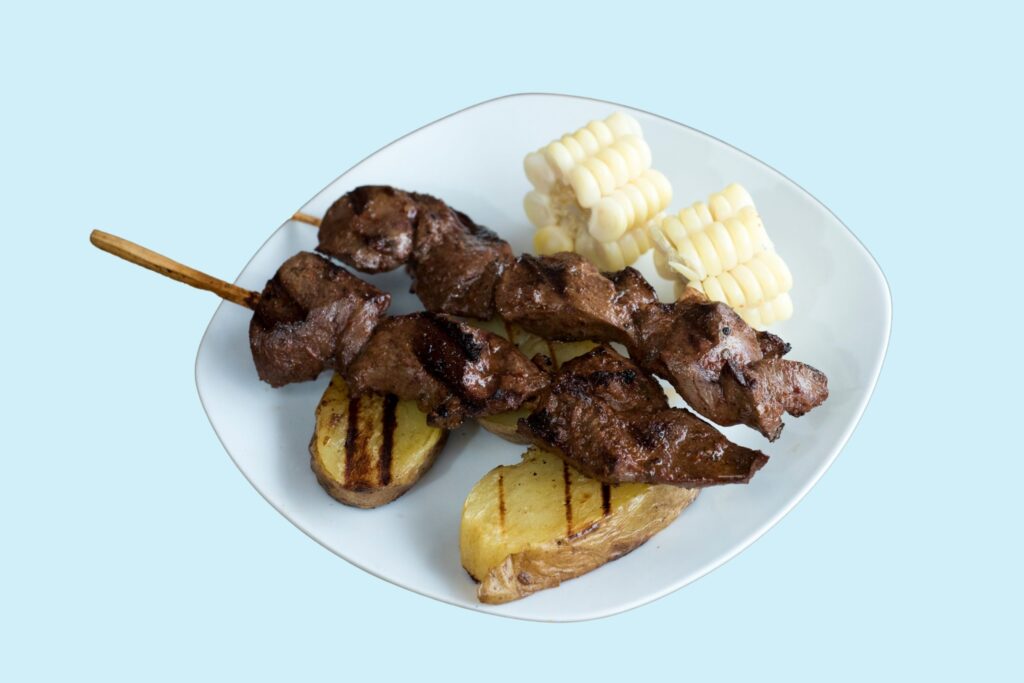
One stick, so much satisfaction – grilled beef heart skewers. This is a meat-on-sticks treat that Peruvians savour after sundown. Some even refer to it as the heart of Peruvian cuisine – get it?
These mouthwatering, succulent skewers start with marinated beef hearts bathing in a blend of vinegar, cumin, garlic, and ají panca (Peruvian red chilli pepper) paste before being grilled over an open flame, giving it a distinct smoky and charred flavour.
Traditionally, these meaty sticks are served with roasted potatoes and a zesty Peruvian chili sauce called, somewhat confusingly, ají. You’ll find street vendors in Lima selling these tasty treats throughout Peru, especially during festivals and gatherings. Grab yourself a handful, as you can’t only have one of these!
Alpaca Meat
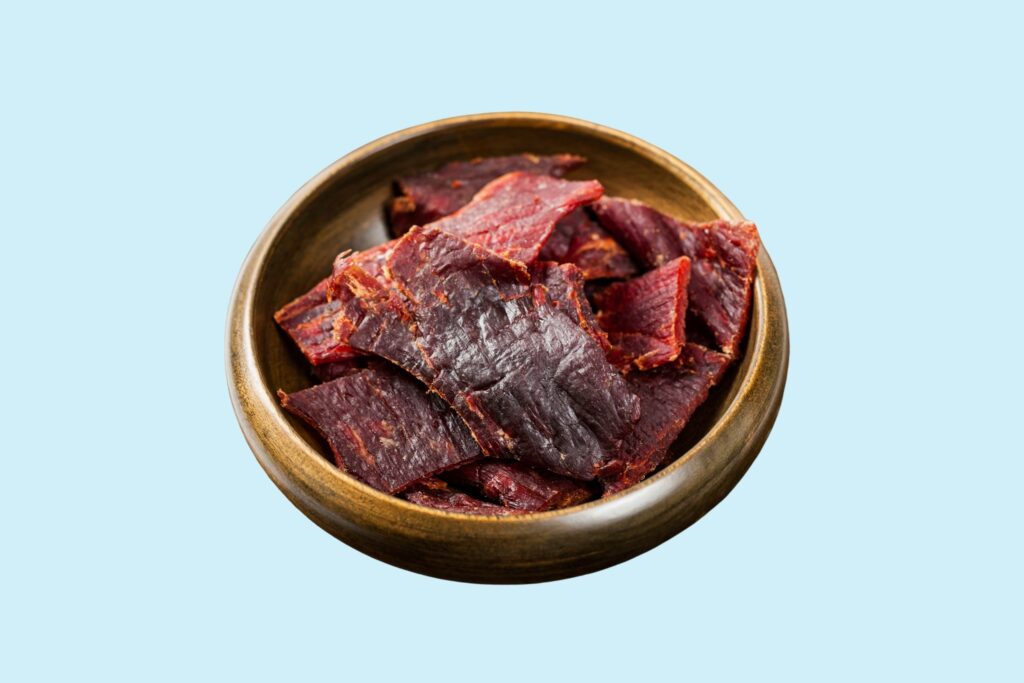
In Peru, alpacas are mostly raised for their soft wool which is turned into clothes like ponchos, and sweaters. However, in the highlands these animals are also raised for their meat.
Although not widely sold throughout Peru, alpaca meat can be found in Cusco, the ancient capital of the Incas and Puno. These areas are home to the largest alpaca herds in the world and here you’ll find many restaurants offering alpaca a la plancha (grilled alpaca). This gamey tasting meat is also used to make another version of anticuchos, a local speciality of alpaca skewered and seared over a grill.
You’ll also find ch’arki, or alpaca jerky. Drying meat was a technique used to preserve it by the indigenous people of the Andes where it was once considered a luxury item by the Inca’s reserved for the noble.
As Though Catalogue explains, “easily transportable, nutritious and boasting a prolonged shelf life [ch’arki was] a luxury food to the Incas”. They go onto say that ch’arki was made available to the common folk during ceremonial occasions and military service and that it “was demanded as a tax, and deposited in was used as a form of tax to be deposited in state storehouses along the Inca road system to provision imperial armies”.
Today, this important delicacy isn’t just preserved for the rich and makes a great souvenir. Jerky Brands elaborates, explaning that it has a mild and sweet flavour, and is extremely healthy and super lean. Where do we sign up?
Ají Amarillo Sauce
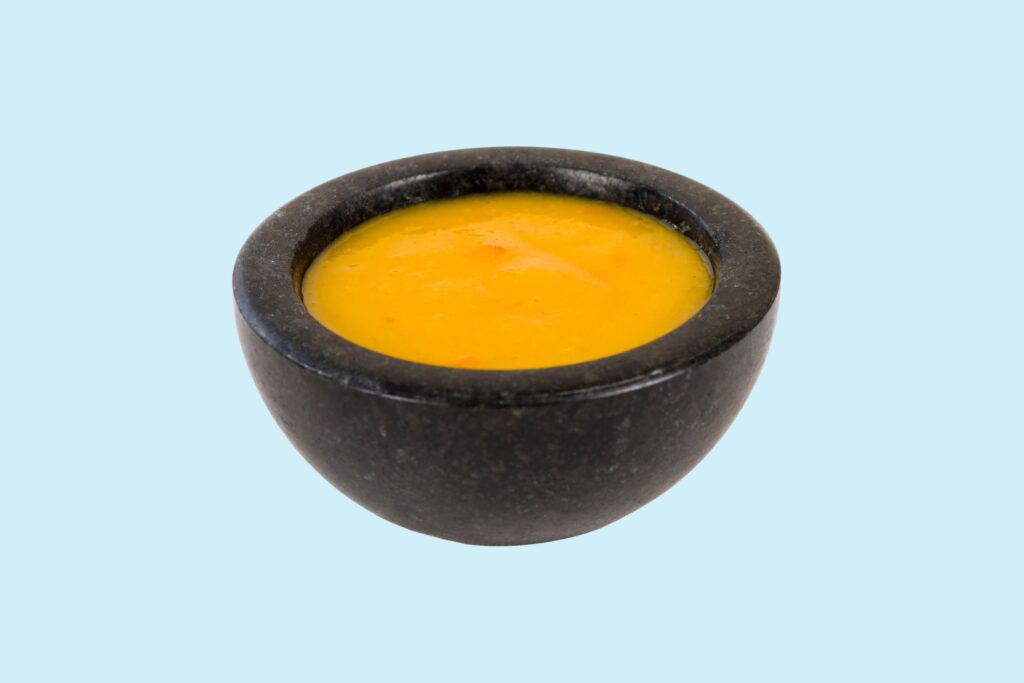
Speaking of souvenirs, this is a bottle you’ll want to take home with you. It’s a spicy yellow sauce where the ají amarillo chilli pepper, a staple in Peruvian cooking, is the star.
Recipes vary from region to region, but no matter where you are, you’ll find it as an accompaniment in Peru to most things, from fried yuca to roast chicken. It’s so ubiquitous, in fact, that the renowned chef Virgilio Martinez called ají amarillo “the DNA of Peruvian cuisine.”
You can buy ají amarillo paste in jars in most markets.
Ají de Gallina
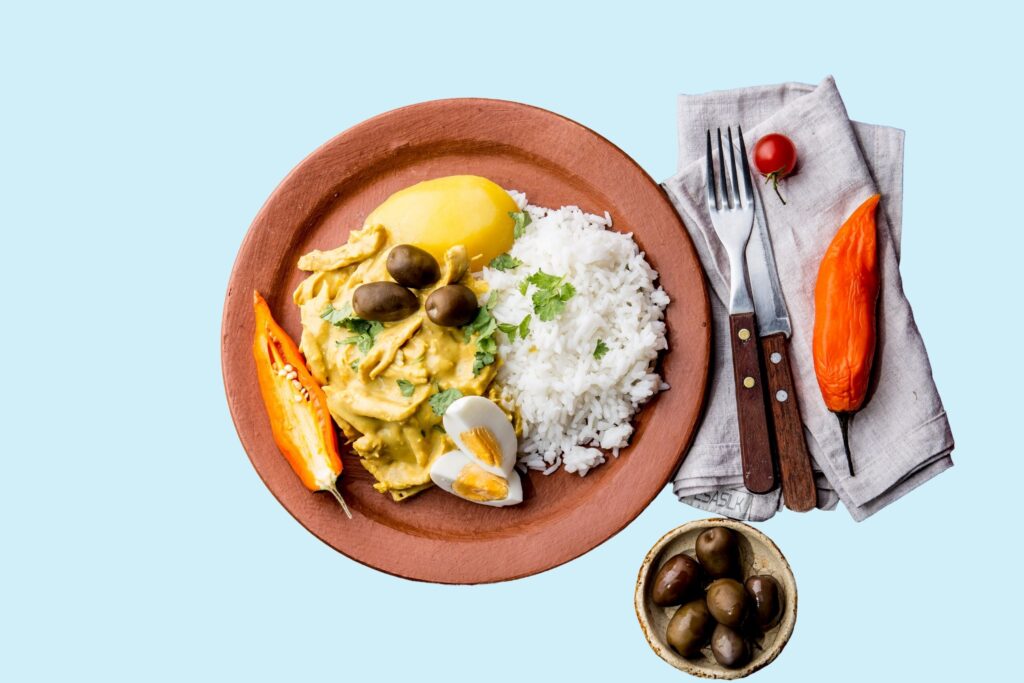
Speaking of ají peppers, a whole dish where they are the star of the show is ají de gallina which simply translates as ‘chicken chilli’. Considered Peruvian comfort food, this dish is complex, creamy and indulgent.
Ají de gallina features shredded chicken cooked in a sauce made from the ají amarillo peppers, evaporated milk, bread and walnuts. The sauce is gently simmered until it thickens and coats the chicken, creating a rich and velvety texture. The result is a bright yellow sauce, thanks to those ají amarillo peppers, which is rich and nutty from the ground walnuts. It’s usually served over a bed of steamed rice and garnished with hard-boiled eggs and olives. Yum!
Interestingly, this dish has roots in the French revolution. As Chef Rosanna Mcphee explains, “at that time, chefs working for affluent families lost their jobs and some migrated to the new world. Wealthy Peruvian creole families employed them to show their wealth to the ruling Spaniards. This is a classic example of a fusion of European/French cooking techniques, available ingredients and local produce”.
Fascinating stuff, indeed.
Papa a la Huancaina
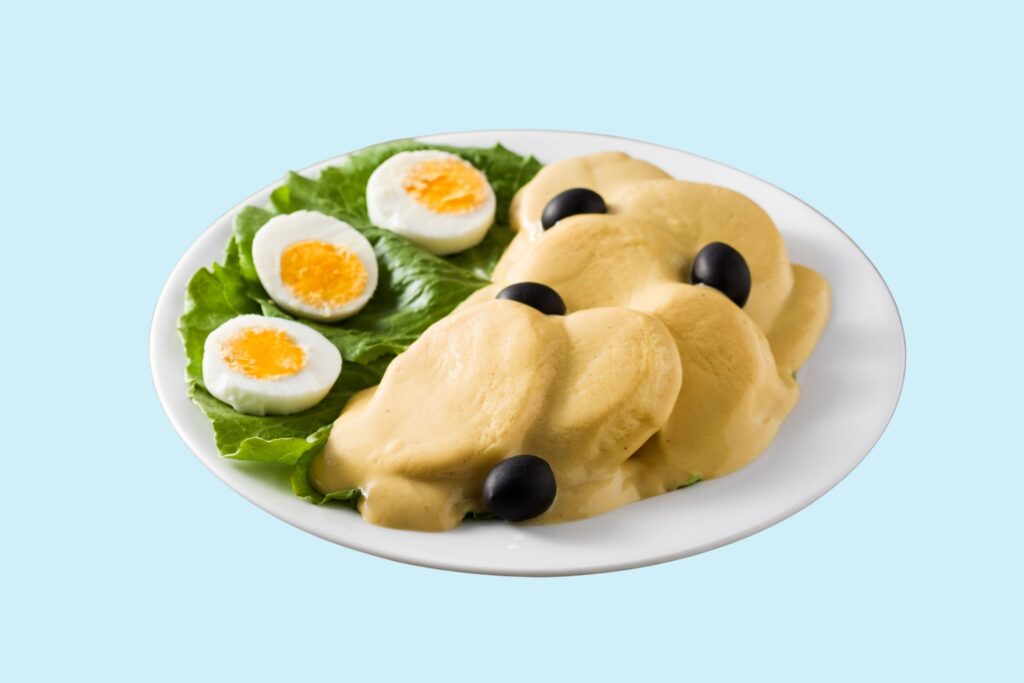
If you love potatoes (hey, who doesn’t?), then Peru’s famous ‘papa a la Huancaina’ will have you coming back for seconds. And thirds. And fourths…
This classic Peruvian potato starter showcases the country’s love for potatoes and is often taken on picnics, just like our very own potato salad. Consisting of boiled yellow potatoes which are sliced and smothered in a creamy and slightly spicy cheese sauce, it’s typically served over a bed of lettuce and garnished with black olives and slices of hard-boiled eggs.
Translating as “potato in the style of the Huancayo woman” (or Huancayo style potatoes), the origins of this dish are unclear, though the most oft told story goes that during the construction of Peru’s Central Railroad, stretching from Lima to Huancayo, people would come to sell food to the workers. One woman decided to distinguish her dish by creating a creamy sauce and it became so popular dish that the workers started asking for the potato lady from Huancayo. The rest is history.
Causa Rellena
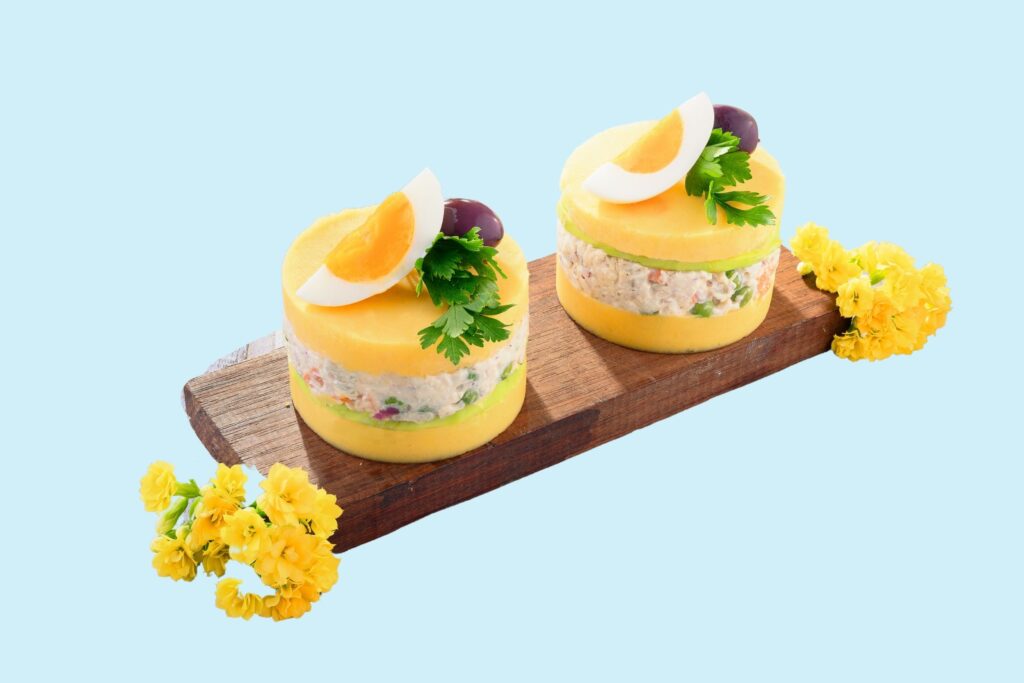
Onto another potato plate, and a visually stunning one at that, this dish is always served cold and features a top and bottom layer of mashed potato which is seasoned with that famous yellow chilli and lime juice. Inside, it is often tiered with avocado, chicken or tuna, crab or some sort of mayonnaise-y salad. Basically, a causa rellena is a chance for cooks to get creative!
Causa Rellena’s name is thought to have come from the word kausaq, which is an old Incan word meaning ‘giver of life’ and is also another word for potato or ‘what feeds.’ The word rellena simply translates to ‘filled’ in spanish.
That said, the origins of this dish are a little hazy. One popular theory, as Taste Atlas explains, is that it was “invented during the Pacific War. [when] food was scarce [so] the Peruvian women started collecting potatoes and any other ingredients they could get their hands on. The women created causa rellena, then offered it to soldiers for the cause of defending their homes, hence the name of the dish”.
Pollo a la Brasa

Pollo a la Brasa, also known as Peruvian rotisserie chicken, is a mouthwatering speciality that has quite rightly gained an international recognition.
To make this widely popular dish, a whole chicken is marinated in a blend of spices, including cumin, paprika, garlic, and soy sauce. Then, it’s roasted on a rotisserie until the skin is crispy, and the meat is tender and juicy. The result is succulent chicken with a flavourful, blistered and burnished skin. It is typically served with French fries and a side of creamy green sauce made from cilantro, garlic, and mayonnaise.
As Eat Peru explains, “thousands of restaurants are dedicated almost exclusively to this single dish, and the experienced chef in charge of basting and roasting them is a specialized profession, known as maestro pollero, loosely translating to “master chicken roaster”.
You’ll still find these master chicken roasters working their rotisserie to this today, often central figures in Peru’s more rural towns and villages.
Rocoto Relleno
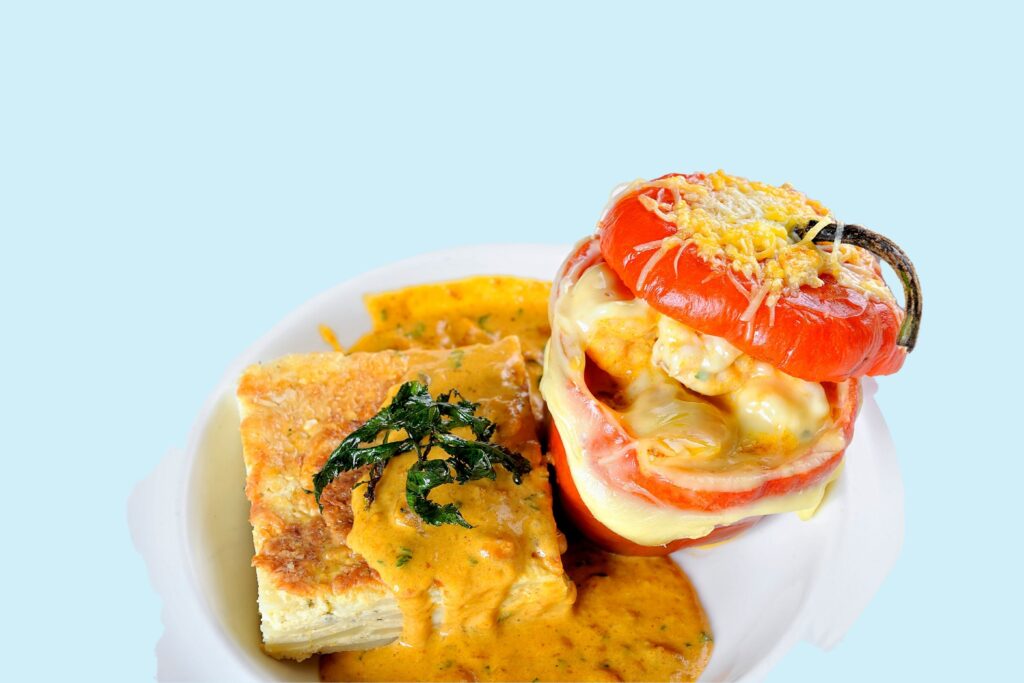
If you like spice and stuffed peppers, then you’ll love rocoto relleno. Hailing from the picturesque city of Arequipa, nestled high in the Andes mountains, the dish features rocoto peppers, which are at least ten times spicier than jalapeños when raw. These flamethrower chillies are stuffed and then baked, creating a textural delight whose flavours balance deftly on the tongue.
The primary stuffing ingredients used in rocoto relleno include ground beef, onions, garlic, cumin powder, paprika, ground peanuts, raisins, black olives, boiled eggs, and fresh cheese, though, as with causa rellena, a little creativity (and using up of ingredients knocking about the house) is very much encouraged.
To prepare the dish, the peppers are first cooked in water with salt and vinegar to reduce their spiciness. The stuffing is then prepared by frying the ground beef with onions, garlic, cumin, paprika, peanuts, and raisins. The peppers are filled with this savoury mixture, topped with olives, boiled egg pieces, and fresh cheese, and baked until golden and bubbly.
Seco de Carne
Seco de carne, a traditional Peruvian stew, boasts a rich culinary history dating back to the colonial era. This flavourful dish has its roots in the Arab cuisine brought to Peru by African slaves, and it was initially known as seco tajime, made primarily with mutton meat. Over time, the recipe has evolved and diversified, with various regions in Peru offering their own unique versions of the dish.
The main ingredients of seco de carne include pepper, loche pumpkin, and chicha (a fermented beverage made from maize), which combine to create a harmonious blend of Peruvian and mestizo influences. In the northern region of Peru, the stew is prepared with kid goat meat and pumpkin loche, while in Huacho, beans are always served as an accompaniment. The choice of meat can vary, with chefs often using lamb, goat, beef, chicken, or even seafood.
The flavour profile of seco de carne is distinctively coriander-based, with the beloved/divisive leaf providing an intense and aromatic taste. The dish is typically served with white rice and potatoes or yucca, making it a hearty and satisfying meal. The secret to achieving the perfect seco de carne lies is allowing the meat to simmer over a medium-low heat, enabling it to absorb the flavours and achieve a fork-tender texture.
Seco de carne is not only a testament to the diverse culinary influences present in Peruvian cuisine but also a celebration of the country’s rich gastronomic heritage. As one of the most popular recipes in Peruvian cuisine, Seco de carne continues to be enjoyed by locals and visitors alike, who appreciate its bold flavours and comforting warmth. And what better bite to end on than that?
The Bottom Line
Peruvian cuisine is a treasure trove of flavours and culinary traditions that reflect the country’s rich history and diverse cultural influences. From the irrepressible ceviche to the comforting aji de gallina, each traditional Peruvian food offers a unique and unforgettable gastronomic experience. So, grab your fork, embrace the flavours, and embark on a culinary journey through the land of the Incas. Buen provecho!



